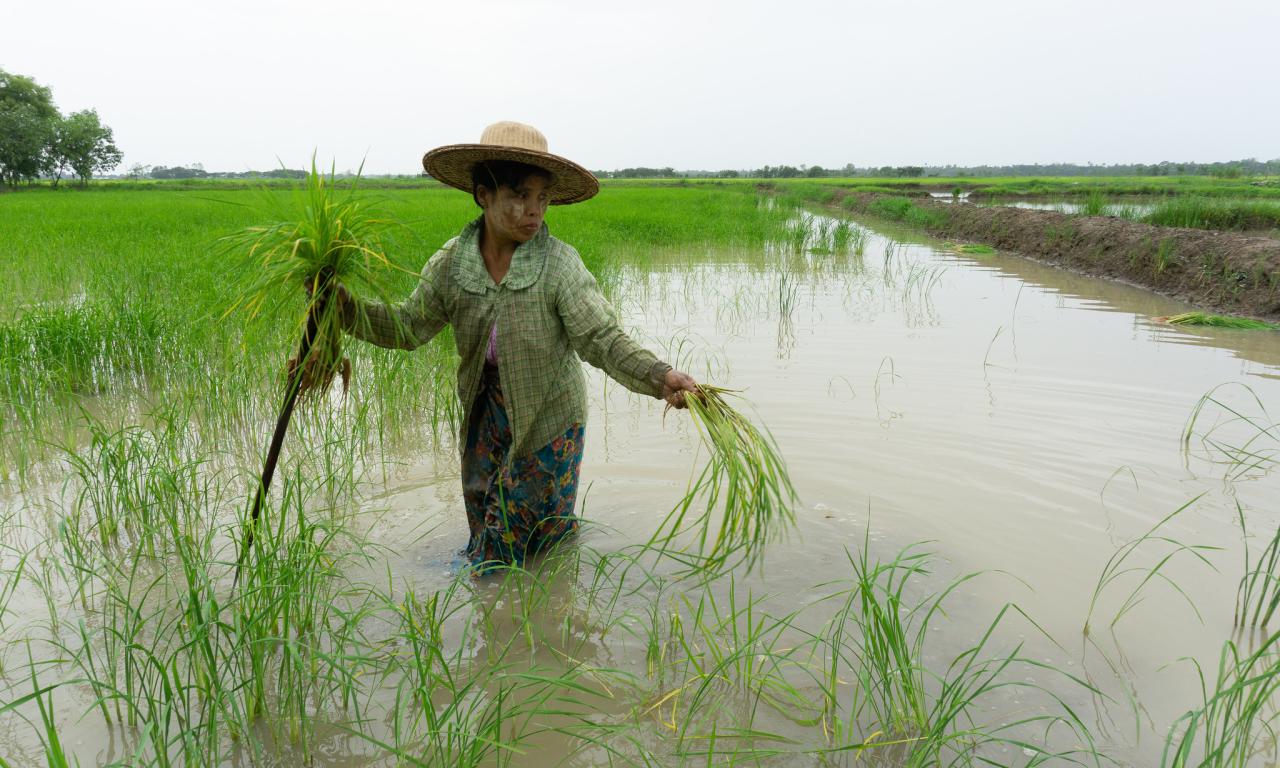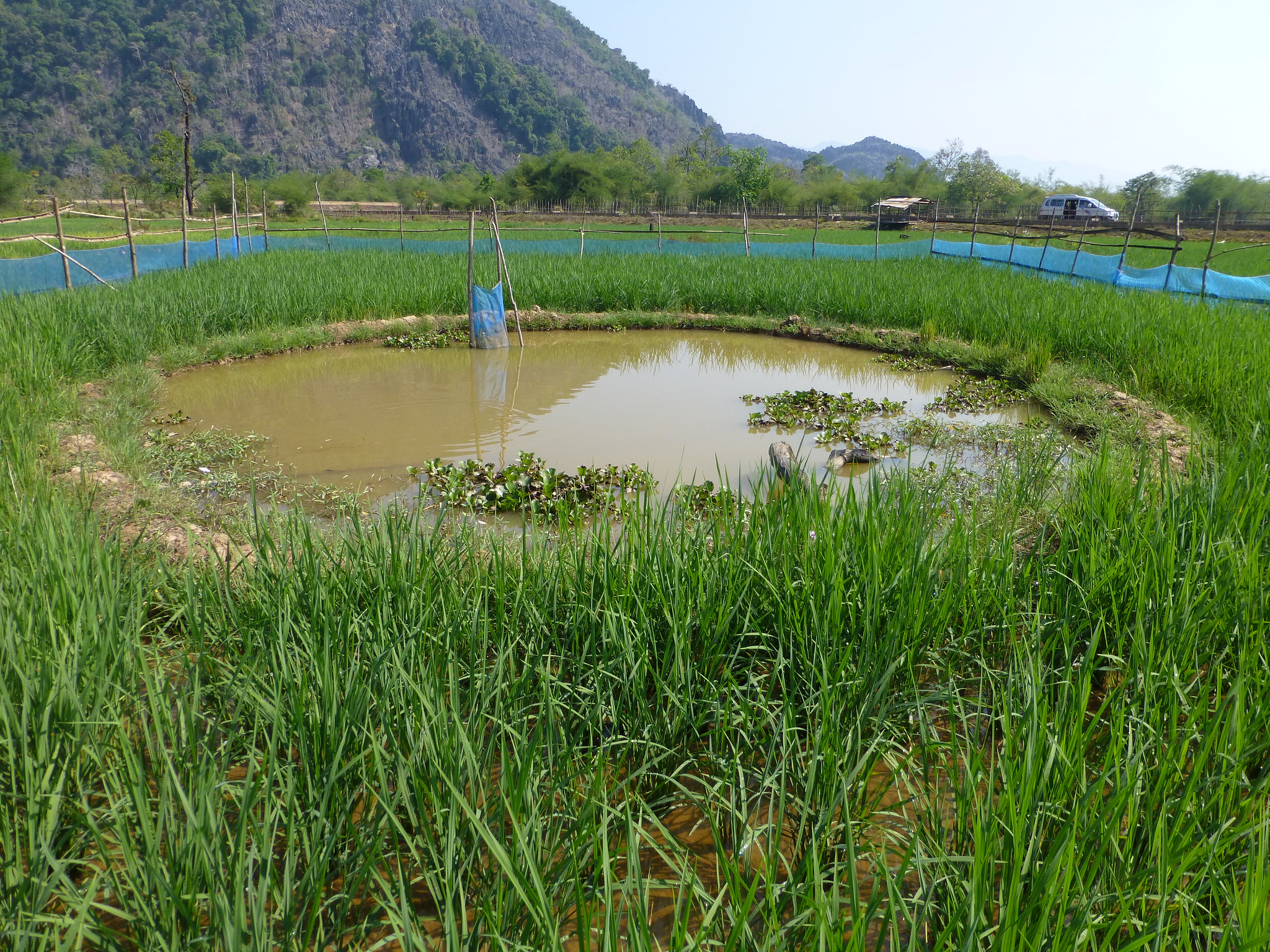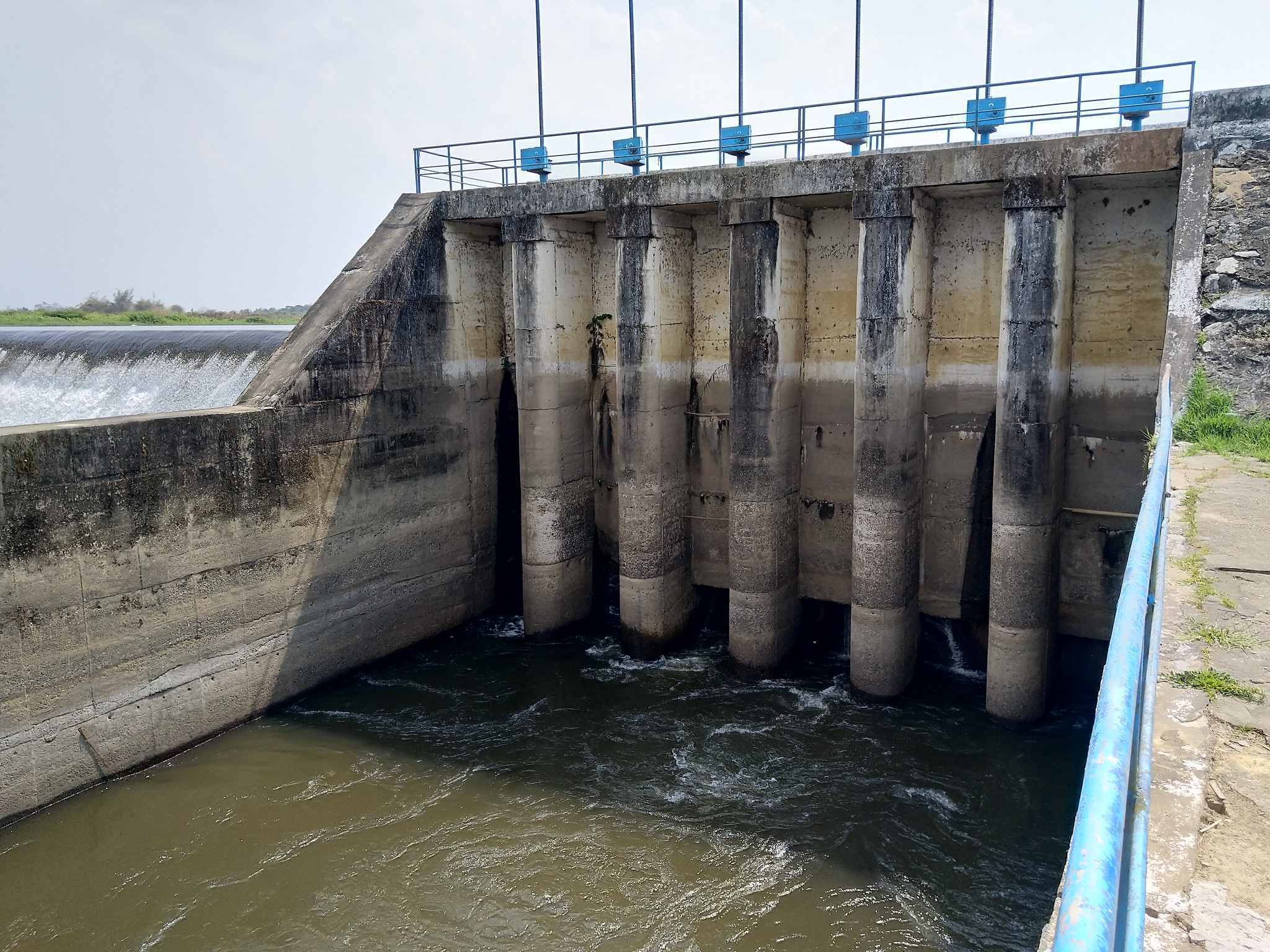
- Researchers call for the integration of fisheries into rice systems and irrigation schemes
- Integrated systems increase social and environmental resilience against the impacts of climate change and can preserve food and nutrition security in vulnerable communities
- Shifting from monocrop systems to multifunctional agricultural landscapes improves both biodiversity and system productivity
Two seminars convened by WorldFish, the International Water Management Institute (IWMI) and the International Rice Research Institute (IRRI) at World Water Week focused on the importance of integrating fisheries in rice-dominated landscapes and reconsidering irrigation schemes in Asia. The two events, “Fish Friendly Irrigation” and “Integrated Rice Fish Systems,” highlighted the value of fisheries for local communities and the reasons why fish should be central to future agricultural landscape management.
Promoting multifunctional landscapes

People have modified agricultural landscapes often over hundreds to thousands of years. Typically, they have comprised complicated mixtures of fields, woodlands and pastures interspersed with rivers, lakes, other wetlands and other natural and non-natural features. Water plays a fundamental role, interconnecting ecosystems and different features of the landscape in complex ways, governed by climate, topography, geology, soils and vegetation. Many ecological functions depend on the way water is stored and moves through a landscape.
Changes to agricultural landscapes, resulting from the intensification of agriculture over the past 60 to 70 years, have resulted in much simpler and less diverse landscapes. In the interest of industrialization and mass production, fields grew larger and single crop (I.e. monoculture) systems began to dominate. The result has delivered significant gains in productivity and food security, but environmental degradation has increased while problems of poverty and malnutrition remain. The low nutrient content of monostaple crops like rice and the lack of dietary diversity for many people is a significant contributor to high rates of malnutrition in low- and middle- income countries. Furthermore, application of large quantities of chemical fertilizers and pesticides, in addition to changes in the flow of rivers and streams caused by land conversion and irrigation, have significantly reduced biodiversity and environmental resilience.
Against this background, the concept of “multifunctional landscapes” has come to the forefront in recent years. Multifunctional landscapes are typically characterized by diversified land use and complex landscape structure, covering many competing uses and interests. Central to the concept of multifunctional landscapes is the belief that the supply of more diverse food, goods and services increases environmental, social and economic benefits. Management strategies that increase the multifunctionality of landscapes, whilst improving the efficiency of resource use, are widely considered a prerequisite for sustainable development.
Where do fish fit in?

Diverse fish species are found throughout landscapes in rivers, streams, lakes and wetlands, offering a vital source of food, nutrition and livelihoods. Fish and other aquatic foods provide a critical source of protein and micronutrients that are otherwise unaffordable to many low-income consumers. In Cambodia and Laos for example, aquatic foods extracted from traditional rice paddy fields are a large contributor to peoples’ diets and represent the primary source of protein for rural populations. There, many smallholder rice farmers are also part-time fishers.
Agricultural intensification typically undermines fisheries. Use of chemical fertilizers and pesticides pollutes waters and can kill fish if applied inappropriately. Construction of irrigation infrastructure alters river flow and riverine ecosystems and also acts as a barrier to fish migration, preventing fish breeding and spawning. In some situations, these impacts can become a source of conflict between fishers, farmers and irrigation managers. For example, in the Mekong Delta, rice intensification programs that include dike construction to prevent seasonal flooding have significantly increased rice production, but household consumption of fish and other aquatic animals has reduced significantly, with poor households experiencing the greatest loss.
Better integration of fish in agricultural systems can bring both financial and nutritional benefits for rural communities. Furthermore, because fish are only healthy when aquatic ecosystems are healthy, fish populations are a good indicator of broader environmental health. Since healthy ecosystems are one of the strongest defences against natural disasters and climate change, ensuring healthy fish populations can also contribute to greater community and ecosystem resilience.
Why are fish currently forgotten?
A key challenge to incorporating fisheries in agricultural systems is that fisheries are diffused across scales and systems, leaving them poorly documented and accounted for. Secondly, there is rarely any integrated landscape planning that incorporates fisheries within the broader context of land and water management. Furthermore, specifically in relation to irrigation schemes, water management is generally more complex if fish are incorporated; water levels have to be controlled precisely and irrigation schedules and water infrastructure must be managed collaboratively.
Governance arrangements must be established to facilitate agreement around trade-offs between farmers and fishers, while also guaranteeing that the benefits of fisheries reach those that need them most, particularly the landless rural poor.
The challenge is to move from awareness of the benefits to concrete action. To this end, WorldFish, IWMI and other partners have developed two important tools: guidelines to help water planners, managers and engineers integrate fisheries in irrigation systems; and a decision support system to help target investments by identifying locations in rice-landscapes most suitable for integrated agriculture and fisheries production systems.
The next step is to convince landscape planners, engineers and financers of irrigation and, more broadly, water infrastructure to use these tools. It will be important to show that such integration is possible from both engineering and water management perspectives and to demonstrate that the cumulative economic and non-economic benefits are equal to, or greater than, conventional irrigation. Central to these benefits will be the greater connectivity of water and land that can be achieved to promote landscape multifunctionality and resilience.
Building climate resilience
In the future, climate change will have increasingly significant impacts on agricultural landscapes. Better integrating fish and aquatic foods into food systems can build resilience and ensure that climate adaptation measures are assimilated in landscapes, reverting agriculture to being an engine for stability, poverty reduction and economic growth. To this end, fish should be a central consideration of multifunctional landscape thinking.
